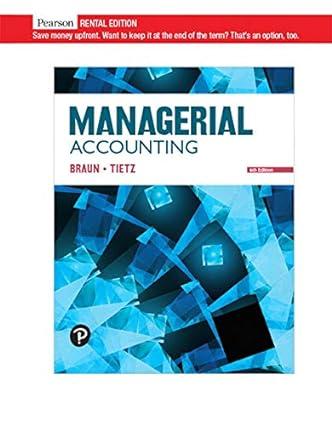Fleet Foot buys hiking socks for ($6) a pair and sells them for ($10.) Monthly fixed costs
Question:
Fleet Foot buys hiking socks for \($6\) a pair and sells them for \($10.\) Monthly fixed costs are \($10,000\) (for sales volumes between 0 and 12,000 pairs), resulting in a breakeven point of 2,500 units. Assume that Fleet Foot has been selling 8,000 pairs of socks per month.
Requiremens:
1. What is Fleet Foot’s current margin of safety in units, in sales dollars, and as a percentage?
Explain the results.
2. At this level of sales, what is Fleet Foot’s operating leverage factor? If volume declines by 25% due to increasing competition, by what percentage will the company’s operating income decline?
3. Competition has forced Fleet Foot to lower its sales price to \($9\) a pair. How will this affect Fleet’s breakeven point?
4. To compensate for the lower sales price, Fleet Foot wants to expand its product line to include men’s dress socks. Each pair will sell for \($7.00\) and cost \($2.75\) from the supplier. Fixed costs will not change. Fleet expects to sell four pairs of dress socks for every one pair of hiking socks (at its new \($9\) sales price). What is Fleet’s weighted-average contribution margin per unit? Given the 4:1 sales mix, how many of each type of sock will it need to sell to break even?
Step by Step Answer:






